Our Spring meeting season is winding down, but keep an eye on the Upcoming Events tab periodically so you don’t miss anything.
Also, check out the latest episode of the SC Grower Exchange Podcast below.
Don’t forget to look at our Resources tab for links to crop handbooks, helpful websites, and related blogs. Be sure to scroll all the way to the bottom to see this week’s Question of the Week, and check back on Thursday for the answer.
Coastal Region
Anna Sara Hill
- Blueberries and strawberries are ripe, and picking is in earnest! However, the dense fog in the mornings has made things challenging. Crews are unable to get into the blueberry patches to start picking until late mornings when the dew dries off, and the temperatures are rising which makes the berries soft. On a positive note, the plants are loaded with berries.
- Watermelon vines are running off the plastic. Due to the abiotic stress many of the plants underwent early in the season, grafted plants still seem to be stunted and slower to grow out than the non-grafted plants. On the flip side, non-grafted plants are dying in fields with fusarium, and grafted plants are not affected. There is some low pythium pressure in some fields in both grafted and non-grafted plants. As temps rise fusarium will become less active, and less of a concern. However, high temps and high humidity will be prime weather for gummy stem blight, so be on the lookout for that. Also, it is the time of year for squash bugs to start moving into the watermelon fields.
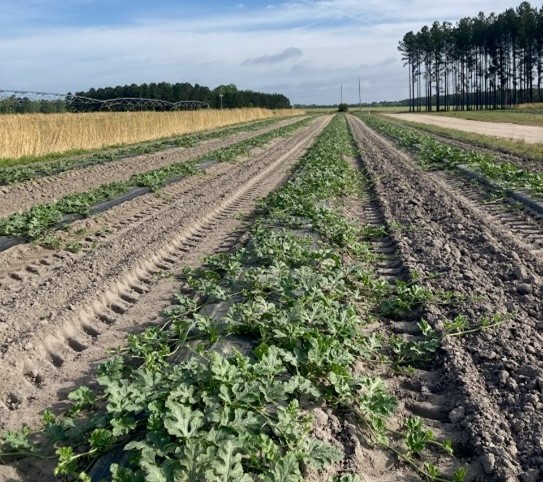

Zack Snipes
- Last week was very warm and really pushed many crops. I am worried that our strawberry season will be cut short because of the warm weather. I am seeing lots of berries, but they are very small and no blooms on the plants.
- Squash and zucchini are being harvested at heavy volumes right now.
- We could really use a good rain around the Lowcountry.
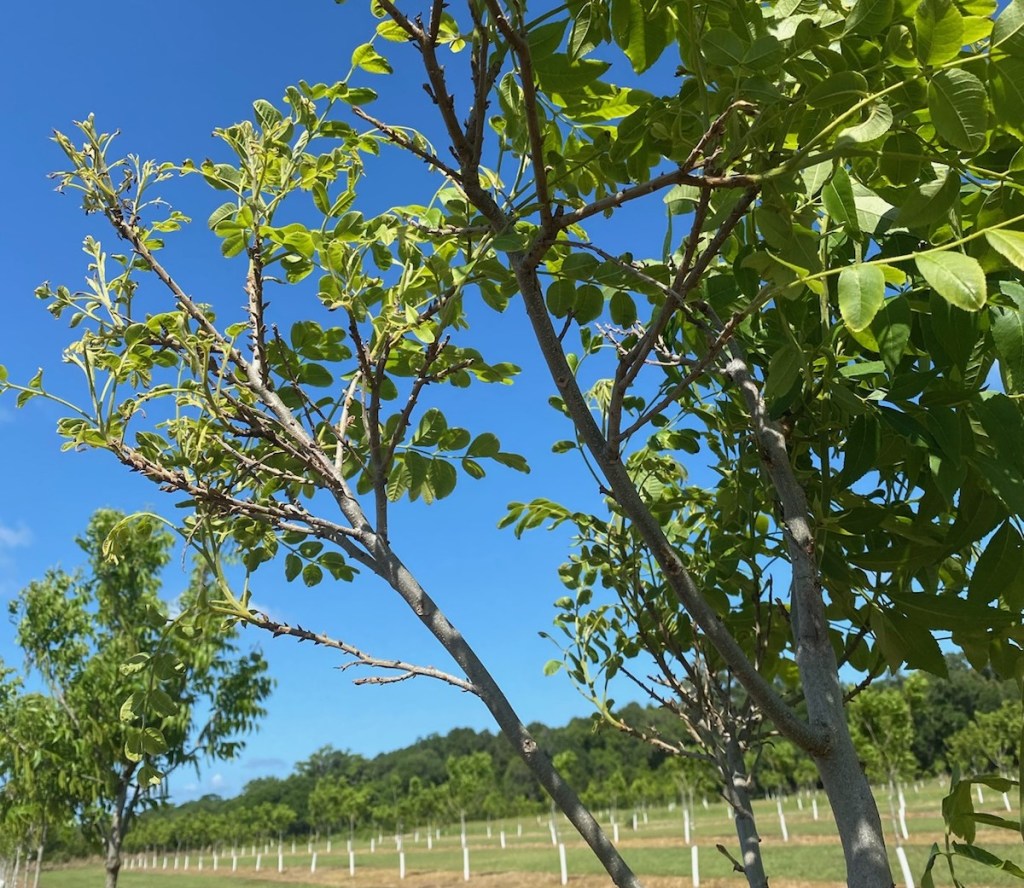
Midlands
Rob Last
- Insect pressure increases with diamondback moths, cabbage loopers, and aphids, which are found easily in brassica crops.
- Thrips are becoming active in tomatoes, peppers and lettuce. Look for silvering to the leaves, often characterized by blackening around the feeding sites.
- Spider mites and sap beetles are active in many strawberry crops. Sap beetles are typically more of a pest when we have water-soaked or over-ripe fruit present. Sanitation can play a big role in managing the pest.
- Given the forecast for rainfall and higher humidity, it would be worthwhile to consider a change of fungicide to Merivon, Switch or Luna Sensation to bring some different modes of action to manage botrytis and anthracnose in strawberries.
- For other soft fruits, such as blackberries and blueberries, consider adding Switch or Luna Tranquility.
- Gummy stem blight is being observed in some cucurbit crops. Remember, don’t rely on Tebuconazole for management because of the decreased sensitivity of gummy stem blight to tebuconazole. Inspire Super is a good choice to bring into the mix in partnership with either Manzate or Bravo.
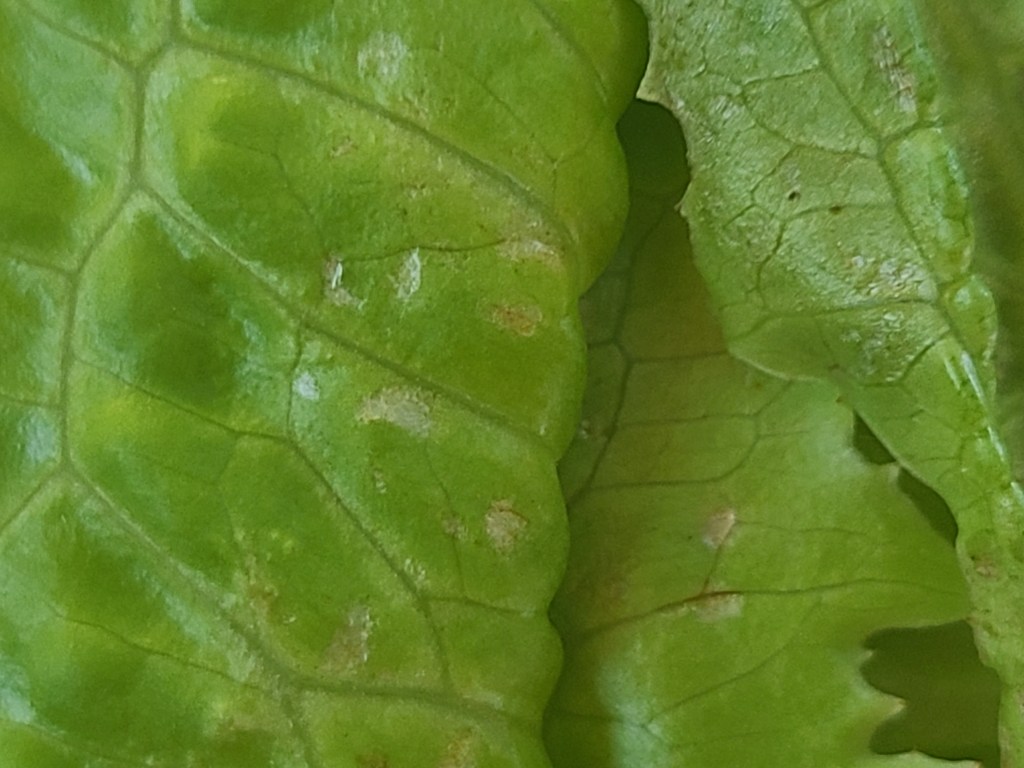
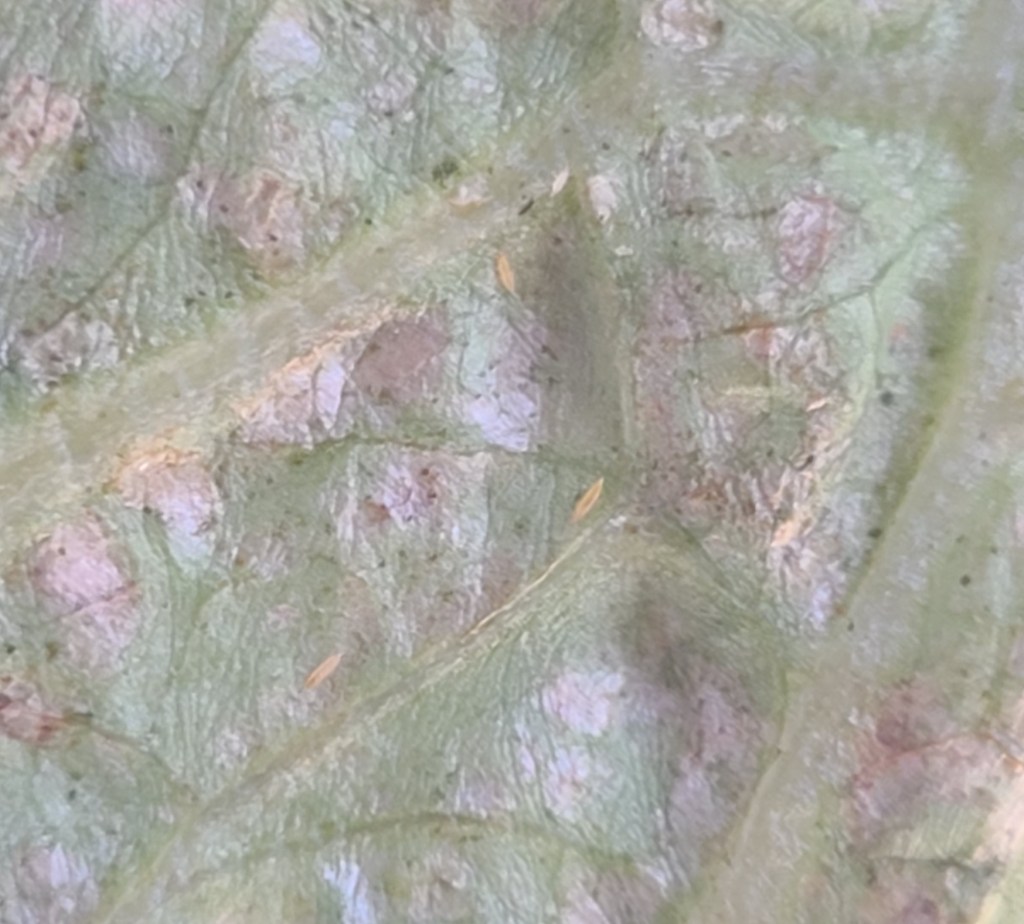
Sarah Scott
- We, finally, received some rain throughout the western midlands. While showers were still spotty, most areas did see some moisture over the weekend.
- We have officially entered peach season here in The Ridge. Growers began harvesting early season varieties last week. The crop is full this year and overall looking good. Crews have been working hard to get blocks thinned for fruit to size. Last year, many growers operated on a very reduced management schedule due to a majority of the crop being lost to freeze events. A few issues that I’ve seen earlier than usual this year, likely influenced by that reduced management, have been bacterial spot, thrips damage, and plum curculio.
- Growers should maintain summer cover sprays to keep these issues at bay. There shouldn’t be a need for additional sprays for thrips unless active in the fields. Organic growers can add in a spray of Entrust to knock down populations. Mainly what is in the field now is callused spots on fruit with a little cracking. This damage is mostly just an aesthetic issue, as it doesn’t seem to go beneath the skin. Likely, thrips damage occurred when the fruit was very small and as the fruit grew the feeding point became more evident. Severe cases may crack deep into the fruit. Spotty plum curculio damage has also been found.
- Strawberries are still being harvested. Phytopthora crown rot has taken out areas of some fields. If growers are experiencing this, they may consider moving to another planting location for the next season. Most fields with this issue are re-plant sites. Still seeing some bronzing on fruit which indicates thrips damage. Overall the crop is doing well but it has been noted that plants do not seem as healthy and strong as in seasons past.
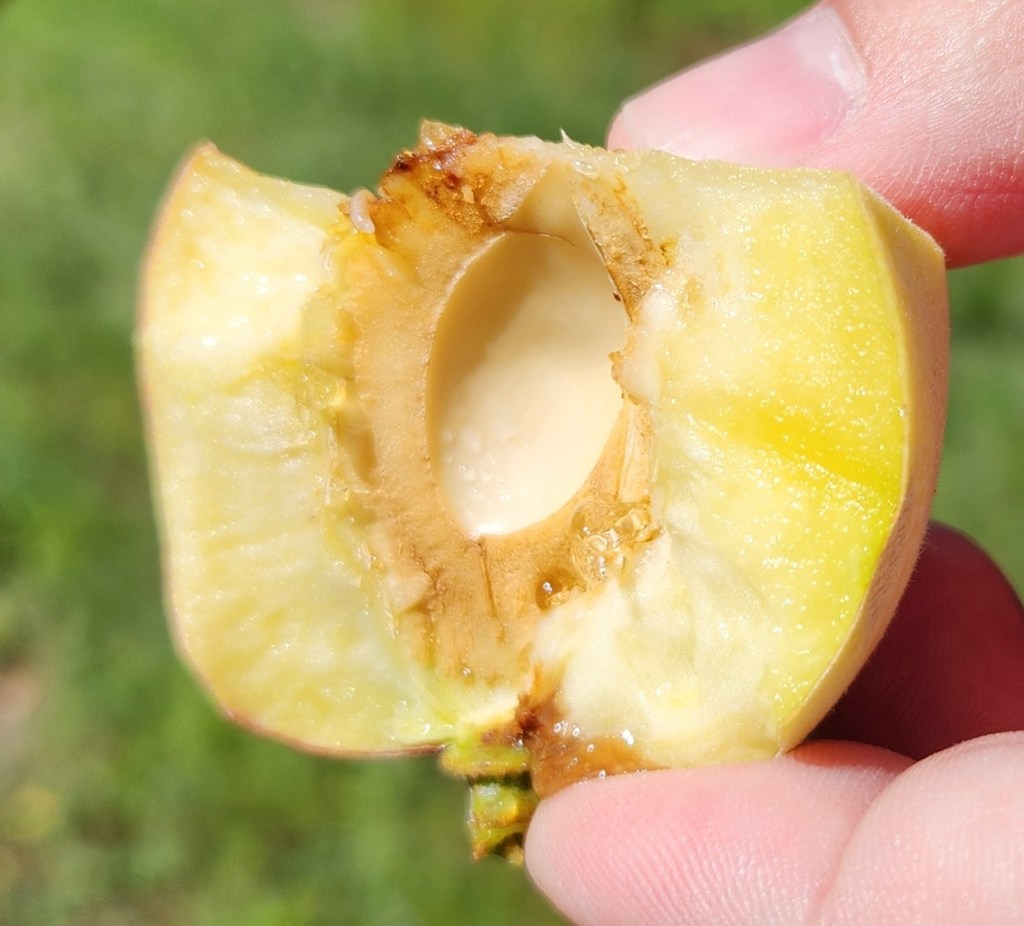
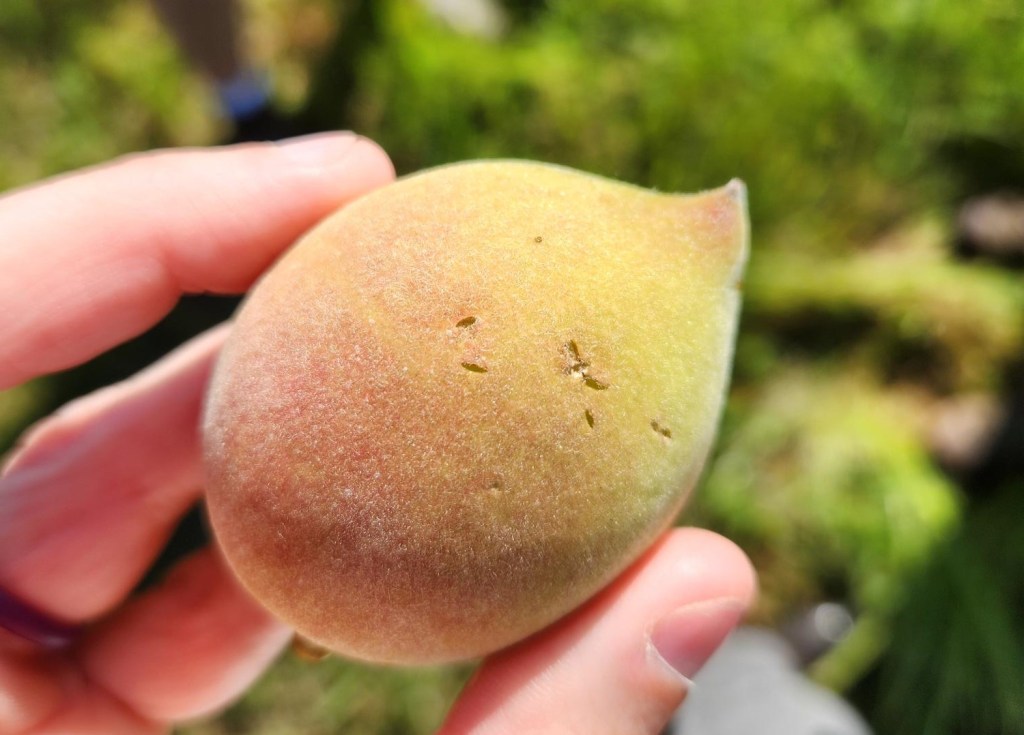
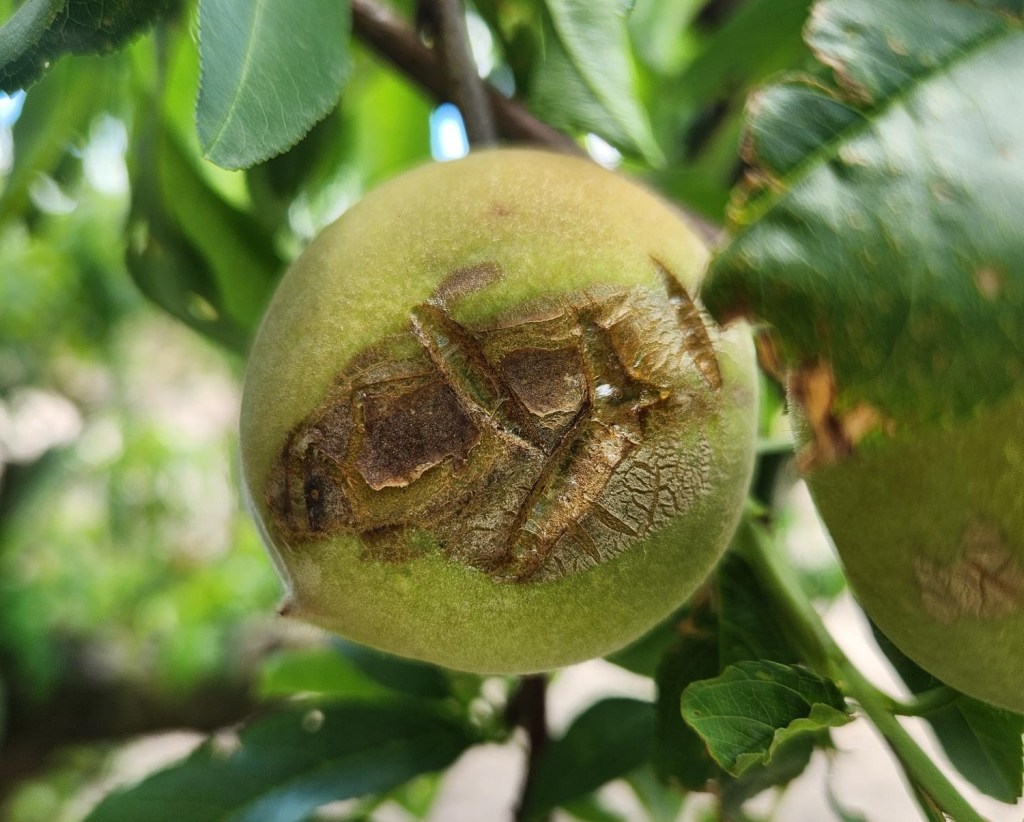
Pee Dee
Christiana Huss
- Strawberry harvest is still going strong. Unfortunately, I’ve seen an uptick in mite populations as well as widespread root rot diseases on some farms. I found an interesting case of strawberry phyllody – a deformity where the berry seeds leaf out. This can be caused by excess chilling before planting, or by a phytoplasma infection spread by leafhoppers. It is not a cause for concern because typically very few plants are affected.
- Muscadine grapes look very promising and are full of flower buds.
- I’ve seen lots of striped cucumber beetles and squash bugs on cucurbit plants.
- Blueberry plants are loaded with berries and a few are ready for harvest.

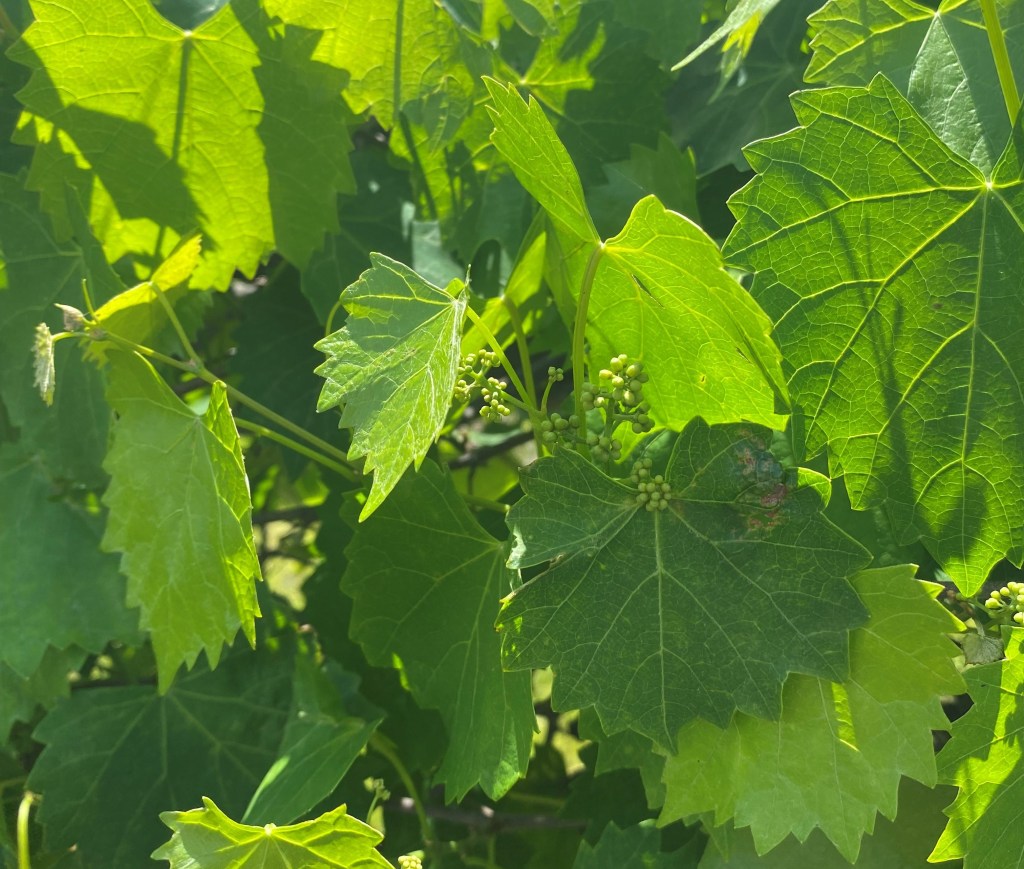
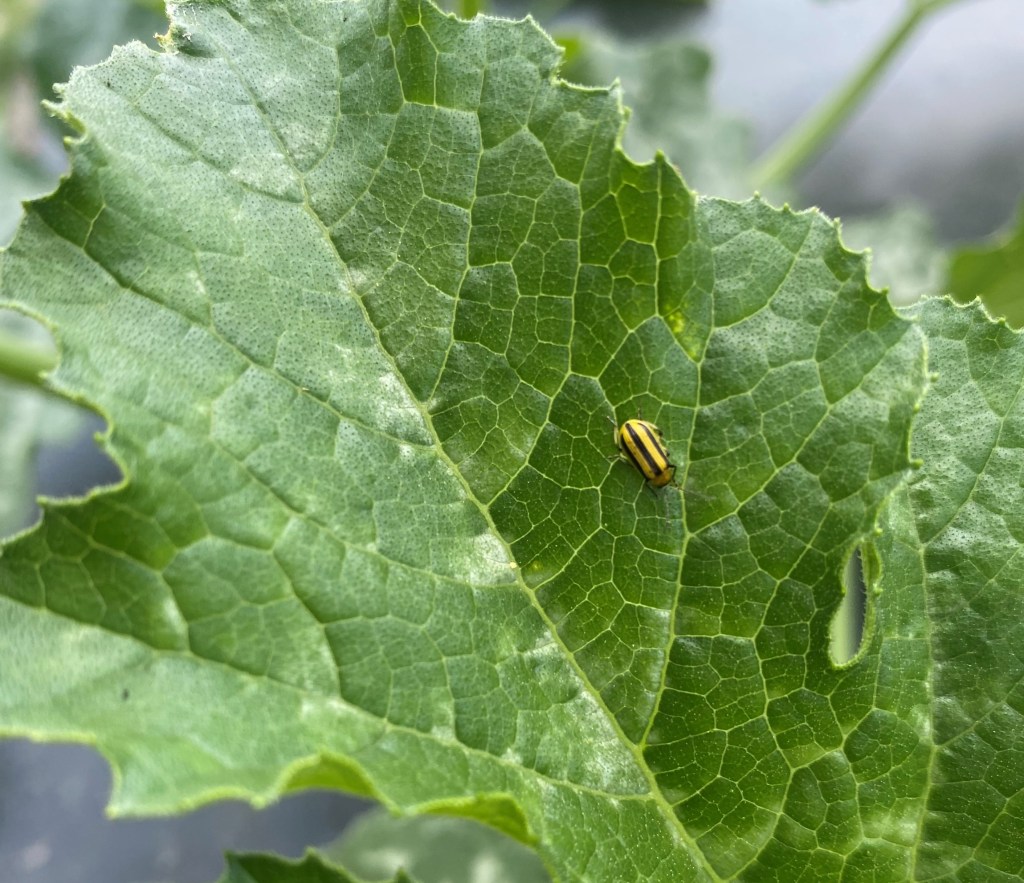
Upstate
Andy Rollins
- Peach growers are continuing thinning and applying a second split application of fertilizer. I am finding some peach leaf curl this year on multiple farms. I believe this is coming from having near complete loss last year with limited sprays being applied. Growers need to continue cover sprays preferably with Captan or sulfur, depending on rain probabilities. Using Bravo at this point is off label and can cause pytotoxicity.
- Strawberry production overall in the Upstate is lower than normal. Many growers have suffered from multiple root issues that are affecting production.
- Commercial tomato and pepper crops have been planted in multiple upstate counties.
- Scale crawlers should be out soon if they aren’t already on multiple crops. If you have had problems with this pest, your treatment time should be approaching. To find crawlers, just wrap limbs with black electrical tape then put two sided scotch tape over it. The crawlers will get stuck on the tape and are easily seen because of the black background. They will be yellow colored with tiny legs. I can help you identify. Typically mid-May is a good time to start finding them. I will be looking this week.
- Multiple blueberry farms have plants dying. Two things have been going on. Several had root rot in low places with rotten roots below. Several had been using RoundUp beneath plants and have been causing problems for a long time. Lastly, we had some cold damage on March 19th. A bacterial pathogen is believed to have caused some damage by entering plants at that point. It is not known for sure yet which one is to blame. There is no recommendation for this other than to wait on fertilizing till after freeze events and to not use RoundUp herbicide underneath these plants. It is impossible to not cause damage overtime. Rely(glufosinate) would be a much safer commercial recommendation.
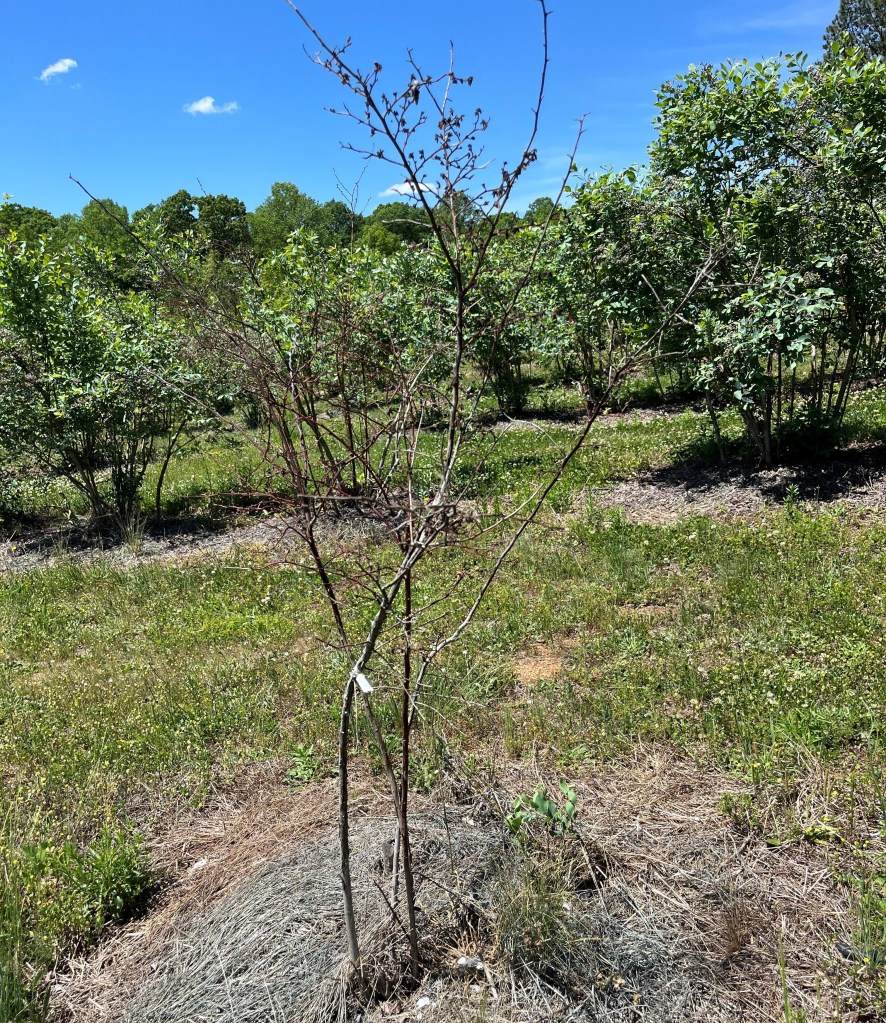
Question of the Week
Which common bird made it’s nest underneath this cucumber plant?

Answer in the comments below and check back on Thursday to see the answer.
One response to “Weekly Field Update – 5/6/24”
THAT WOULD BE A KILDEER
LikeLike